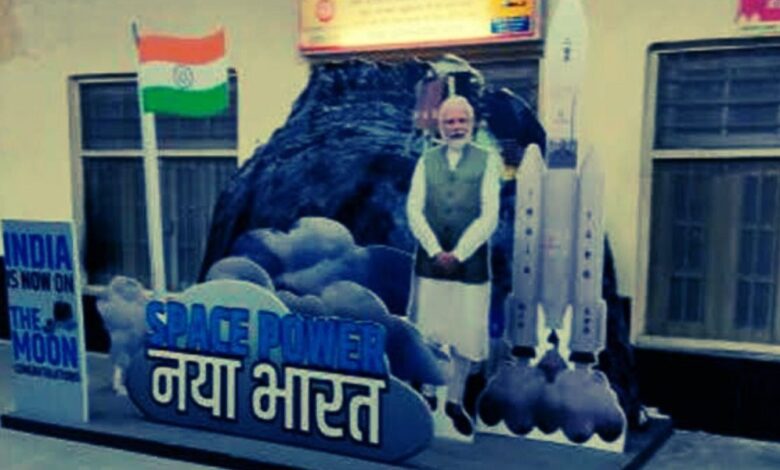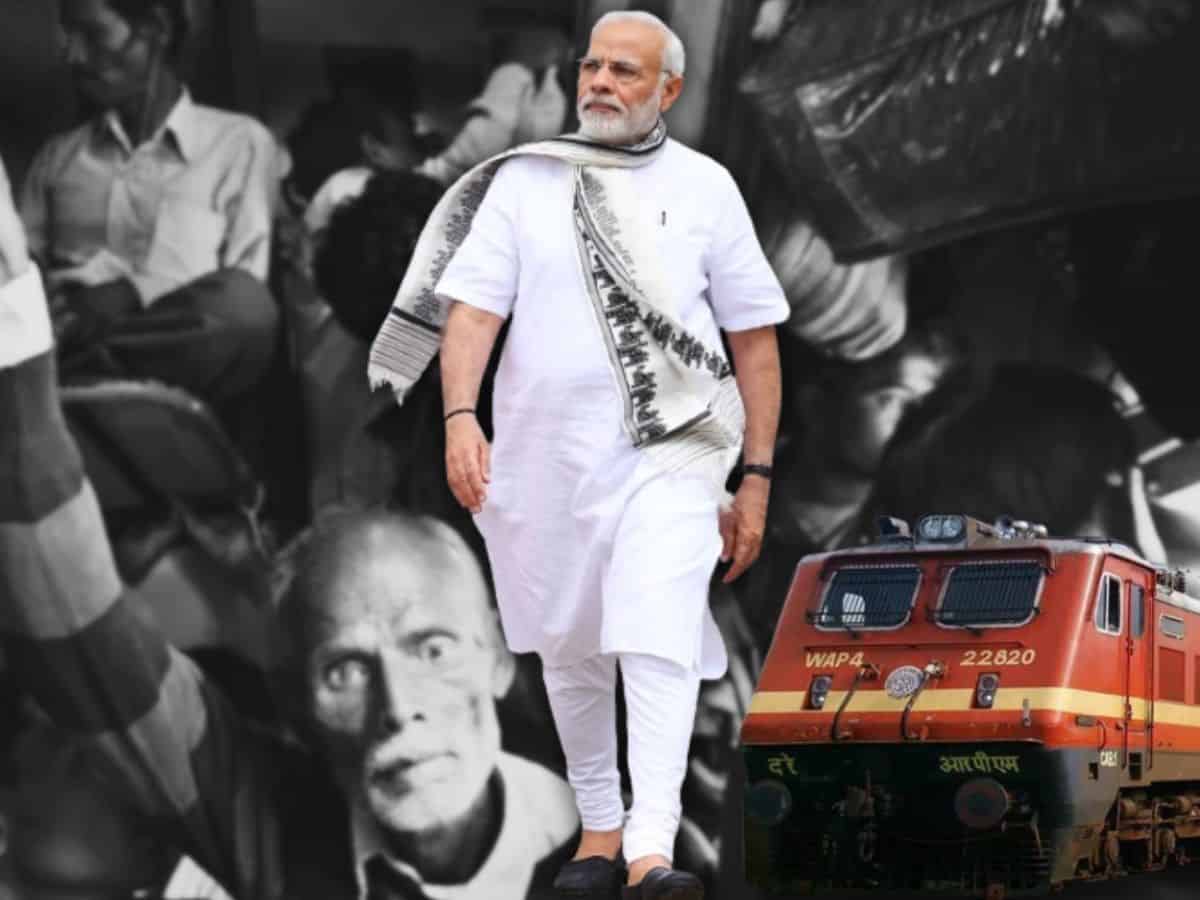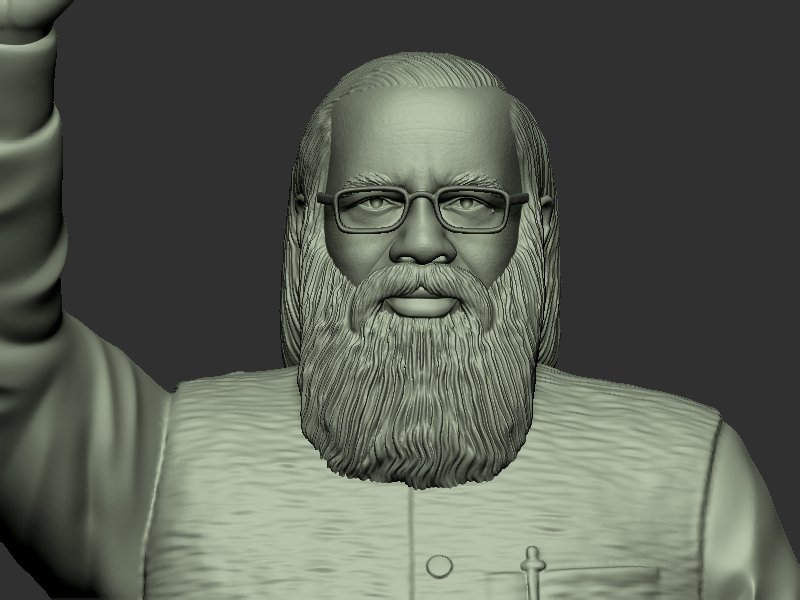Narendra Modi’s Obsession With Selfies, The Politics Of The Selfie, The Power Of A Good Selfie And The Hefty Bill Of Rs. 1.62 Crore
In the age of social media dominance, political leaders worldwide have recognized the potency of the selfie as a tool for shaping public perception. However, Prime Minister Narendra Modi seems to have taken this to new heights, weaving the politics of the selfie into the fabric of his governance. From 3D selfie booths at railway stations to military directives on selfie points, Modi's fascination with self-portraits raises eyebrows and questions about the intersection of authenticity, image-making, and electoral strategies. These selfie booths and India's historical tendency for self-glorification through statues and road namings is striking. Throughout India's political history, various governments have engaged in a cycle of building grand statues and renaming public spaces to project power and leave a lasting legacy. However, these projects often fall prey to the ever-changing political leadership, with subsequent governments dismantling or renaming them, perpetuating a cycle of wasteful expenditure. The selfie booths, in this context, can be seen as a contemporary manifestation of this historical trend. Narendra Modi definitely knows the power of a good selfie.

The Selfie Phenomenon in Indian Politics, Narendra Modi’s 3D Selfie Booths
The 2014 Indian general elections marked a turning point, branding it as “India’s first social media election.” Narendra Modi’s team astutely utilized social media platforms, including the selfie, to connect with the electorate.
Modi might not be the sort of person you would expect to be shooting the self portraits stereotypically beloved by teenagers. However, like many U.S. and European leaders, Modi has clearly realized that social media can be a powerful tool for reaching his electorate.

The 3D Selfie Booth Controversy
The most recent manifestation of the prevailing selfie craze involves the introduction of PM Modi selfie booths.
Railway authorities find themselves in a frenzy attempting to rationalize the presence of 3D booths at stations, but the hefty bill of Rs 1.62 crore has left the Opposition distinctly unimpressed and perhaps much of the masses too.
Let us see what the commotion is about, and it may not be passengers running to catch a less-than-punctual train!
The railways ministry found itself embroiled in controversy following an RTI response from the Central Railway, unveiling an expenditure of approximately Rs 6.25 lakh for each permanent 3D selfie booth and around Rs 1.25 lakh for each temporary booth at 50 railway stations in the zone.
What do these booths do? Within these booths, individuals have the opportunity to capture selfies alongside a lifelike 3D representation of Prime Minister Narendra Modi. Ha!
Twenty smaller (category C) stations, including Karjat, Kasara, Latur, and Kopargaon, boast permanent booths, while 30 larger (category A) stations, such as Mumbai’s Chhatrapati Shivaji Terminus, Kalyan, Nagpur, and Betul, feature temporary installations.

At The Whose Cost?
Swiftly crunching the numbers, the Opposition expressed dismay over the staggering Rs 1.62 crore expenditure.
Congress president Mallikarjun Kharge took to X (formerly Twitter), denouncing it as an “absolutely brazen waste of taxpayers’ money,” triggering a barrage of claims and counterclaims on social media from both ends of the political spectrum.
Railway officials in Delhi and Mumbai found themselves scrambling to elucidate their position to anyone willing to listen.
Their justification rested on the premise that the selfie booths aimed to showcase the Union government’s various schemes and achievements, such as Skill India Digital, Ujjwala Yojana, and the Chandraayan mission, with the prime minister’s image merely forming a part of the broader narrative.
Selfies, Life, Accidents
In a nation where the official endorsement of selfies coexists with the grim reality of accidents and fatalities resulting from attempts to capture self-portraits, the controversy surrounding what appears to be a national pastime is not new for either the railways or the government.
A 2018 study published in the National Library of Medicine revealed India’s prominence in a list of countries with the highest “selfie deaths.”
Between October 2011 and November 2017, there were 259 deaths in 137 incidents, with over a hundred of those fatalities reported in India.
Several years ago, the Union tourism ministry issued an advisory to states to identify potential danger spots as ‘selfie danger zones.’
Recognizing the hazards, railways initiated campaigns to dissuade passengers from risky stunts like hanging out of moving trains for selfies.

The Muted Justification
Railway officials attempted to justify the expense, claiming the booths aimed to showcase government schemes and achievements alongside the Prime Minister’s image.
However, the sheer extravagance of the selfie booths raises pertinent questions about the government’s priorities – at a time when the country faces pressing issues, the allocation of resources for glorifying the Prime Minister’s image through high-tech selfie points seems misplaced.
Selfie Culture in India
India’s love affair with selfies is not new, with the country consistently ranking high in “selfie deaths.”
However, the government’s dual stance on promoting and discouraging selfies raises eyebrows. While campaigns like “Har Ghar Tiranga” and “Meri Maati Mera Desh” encourage citizens to take patriotic selfies, the railways simultaneously caution against dangerous selfie-taking practices.
The contradictory messages reflect a broader trend in Indian politics, where selfies become both a tool for connecting with citizens and a potential hazard leading to accidents and even deaths.
The government’s endorsement of selfies is evident not only in railway stations but also in military directives and educational institutions.

The Politics of Authenticity, Selfies as a Political Tool
Elected officials globally have embraced the selfie as a tool to convey authenticity, accessibility, and spontaneity.
Experts argue that politicians who manage their social media accounts personally, using selfies, can establish a more genuine connection with voters.
Thus, the selfie becomes a digital handshake, eliminating the barriers between politicians and constituents that often exist in written platforms like Twitter.
While selfies project an air of authenticity, they are also about control.
Politicians leverage selfies to master their public image in a world where everyone has become a potential photojournalist; the transparency signalled by selfies can mask the calculated efforts behind the scenes, where politicians carefully curate their public personas.

Personal Glorification, The Viewpoint
The installation of PM Modi’s selfie booths, at the exorbitant cost of Rs 1.62 crore, should trigger a debate about the prudent use of taxpayers’ money.
While supporters argue that these booths serve as a unique medium to showcase government schemes and achievements, the significant financial investment should raise legitimate concerns about their tangible benefits for the economy and governance.
First and foremost, the extravagant expenditure on these selfie booths appears to be a blatant misuse of public funds.
In a country grappling with pressing issues like healthcare, education, and poverty alleviation, allocating such substantial resources to create 3D selfie points seems grossly disproportionate.
For once, perhaps, the Opposition, led by Congress president Mallikarjun Kharge, has rightly labelled it as an “absolutely brazen waste of taxpayers’ money.”
The substantial financial investment in these booths could have been redirected towards more pressing needs that would contribute to the nation’s development.
The argument that these booths aim to showcase government schemes and achievements invites scepticism – while it is essential for the government to communicate its initiatives, the extravagant nature of the selfie booths raises questions about cost-effectiveness.
The same message could likely be conveyed through more cost-efficient means, such as digital campaigns, community outreach programs, or grassroots initiatives.

Blast From The Past
One cannot help but overlook the comparison between these selfie booths and India’s historical tendency for self-glorification through statues and road naming’s is striking.
Throughout India’s political history, various governments have engaged in a cycle of building grand statues and renaming public spaces as a means of projecting power and leaving a lasting legacy.
However, these projects often fall prey to the ever-changing political landscape, with subsequent governments dismantling or renaming them, perpetuating a cycle of wasteful expenditure.
The selfie booths, in this context, can be seen as a contemporary manifestation of this historical trend.
The focus on showcasing the prime minister’s image through expensive installations raises concerns about the longevity and practical utility of such endeavours – just as statues and road namings were subject to change with every political transition, the sustainability of these 3D selfie points comes into question.
In the broader economic context, investing in projects with lasting benefits, such as infrastructure development, education, or healthcare, would be a more prudent use of taxpayers’ money – investments which have the potential to stimulate economic growth, enhance public welfare, and create a more sustainable impact on society.
The controversy surrounding these selfie booths accentuates the need for responsible fiscal management and a more strategic allocation of resources.
As India strives for economic development and inclusive growth, it is crucial for the government to prioritize investments that yield long-term benefits for the nation rather than succumbing to the allure of ephemeral and politically motivated projects.
The Last Bit, the extravagant spending on PM Modi selfie booths, while claiming to showcase government achievements, raises serious questions about fiscal responsibility and the government’s priorities.
The parallels with historical tendencies of self-glorification through statues and road namings further spotlight the pitfalls of such projects -taxpayers’ money is a precious resource, and the government must engage in responsible spending that contributes meaningfully to the nation’s progress and well-being.
Narendra Modi’s fascination with selfies, displayed by the extravagant 3D selfie booths – the clash between promoting nationalistic selfies and cautioning against the dangers of selfie-taking shows a contradictory approach.
Today, in the age of social media dominance, the politics of the selfie has become an integral part of electoral manoeuvring, leaving us to question the real motives behind the seemingly harmless act of capturing a self-portrait.




